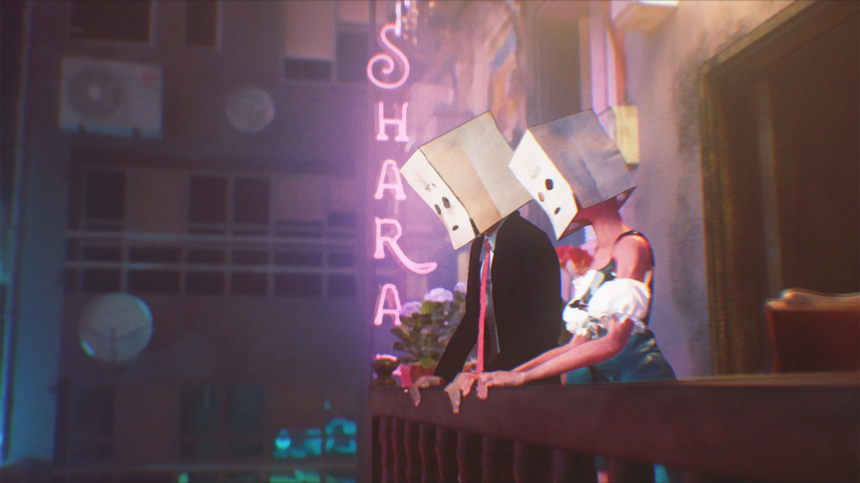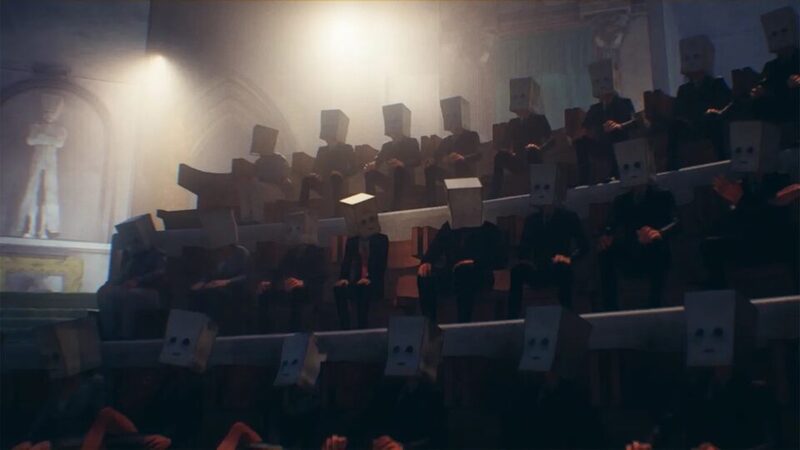Montreal Nouveau 2024 Review: SCHIRKOA: IN LIES WE TRUST, Anonymous Dystopia to Queer Utopia

Authoritarian dystopian futures, as imagined by writers, artists, and filmmakers, often have familiar tropes, usually about the neutralization of individuality, the importance of conformity, and how it eventually becomes impossible to keep the brightness and individuality of the human spirit contained. Something of the hero's journey is often followed by a protagonist (or two), though it's how these stories find their own unique perseptive and cultural specificity that makes them stand out.
First a graphic novel, then a short film, now a feature length story, Ishan Shukla's Schirkoa: In Lies We Trust tells such a story, but with that different perspective that is often lost in more western dystopian tales. Focusing more on how elements of community, queerness, and embracing the strange and wild, and how even that can become fraught with difficultym makes this film a surreal symphony, full of love, sex, discord, calm and fever pitch.
In a city-state where everyone wears paper bags, authorities believing that 'to be alike is the way of life', 197A (Shahbaz Sarwar) is a midlevel bureaucrat who finds himself poised for public office. It feels a typical 21st-century dystopian metropolis, with high rises, slums, near-constant rainy weather, and a constant feeling of being watched. Marked by eastern architectural notes, 197A finds himself at odds with his lover 242B (Golshifteh Farahani), a prostitute, who cannot stand this oppresive regime any longer and plans to leave for Konthaqa, outside the city limits where refugees have made a makeshift (so it is assumed) home.
These refugees are called 'anomalies' - the state doesn't say what their problem is, only that the Anomalies are a problem, and they work to exerminate them. So when 197A meets a woman, 33F (SoKo) who often refuses to wear a paper bag, and enters into a quick and lustful affair, it seems she is trying to hide in plain sight. As 197A learns what makes her an 'anomaly', and he is also a witness to the sterile and yet deeply hostile bureaucracy of the city state, he finds himself a power that it seems created by the very authority that sought to repress it.
197A, discovering his horns that make him the proverbial devil to his government, makes his own escape, he finds himself quite the opposite in Konthaqa: a deity, and a queer one. He/They is now free to discover the identity - was it always hidden, or was it born out of repression? While much of the first half of the film focuses on action and uncovering the outward truth, the second half turns to conversations, philosphical understanding, and discovering inner truth. How are legends and religions created by a distortion of the truth.
The people of both Schirkoa and Konthaqa seem to worship some figure called 'Lord O', but 197A themselves become this deity, much like the many deities of Hinduism. But 197A learns that utopias can, in their way, be just as stifling as dystopias; there is no perfect world or city or environment, since perfect means the end of love, the end of growth, the end of possibility.
The animation truly looks lifted off the page, in the best way; it feels both solid and fluid, the characters full of dimensions and layers. Layering, indeed, is key to the visual and sonic world - the background giving the story depth as a full world, the sound design and score makign everything seem slightly off kilter - a way of showcasing how our hearts and minds would express that something just isn't right, even if we don't know how to express it.
Schirkoa: In Lies We Trust
Director(s)
- Ishan Shukla
Writer(s)
- Ishan Shukla
Cast
- Asia Argento
- Golshifteh Farahani
- Gaspar Noé








